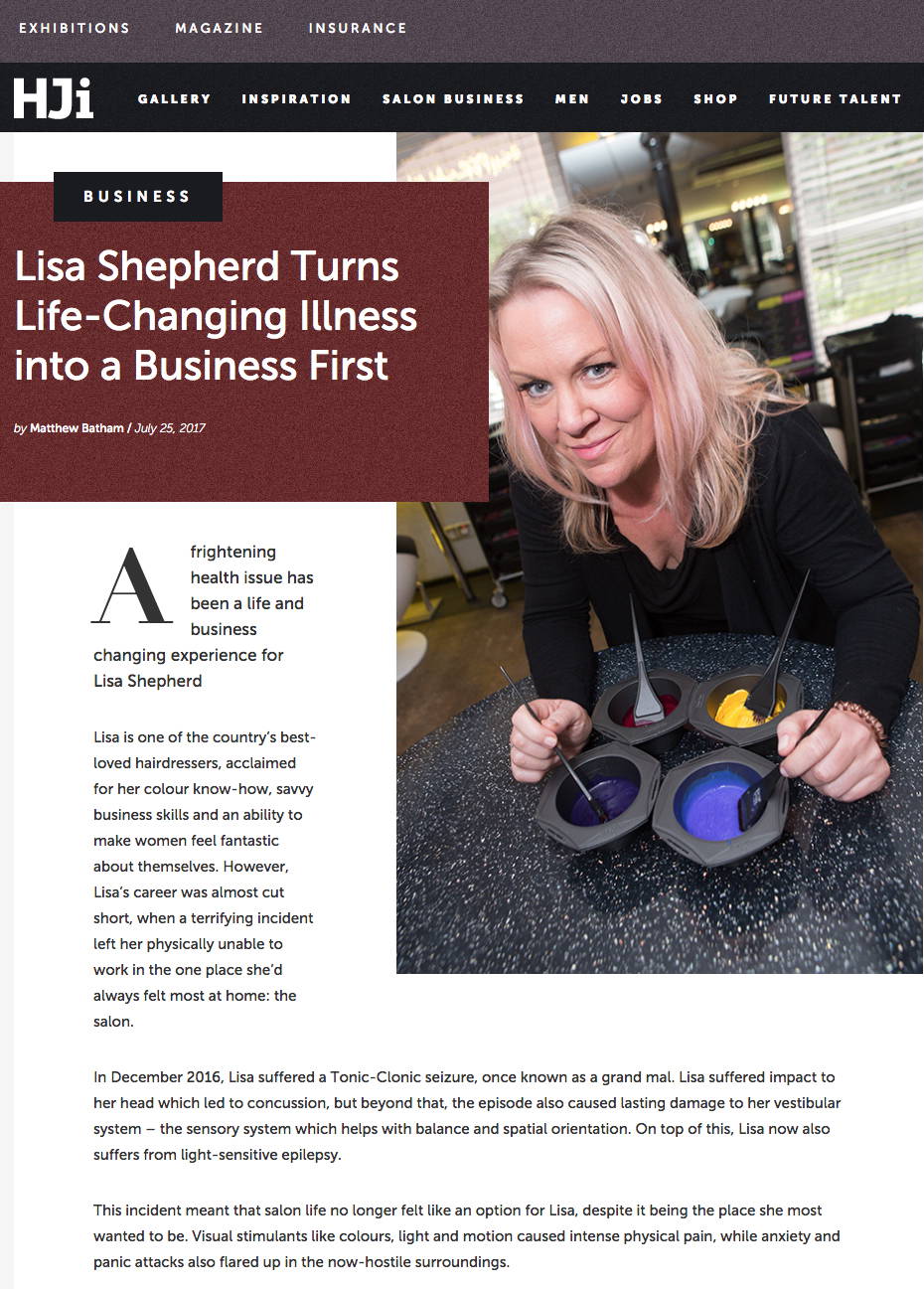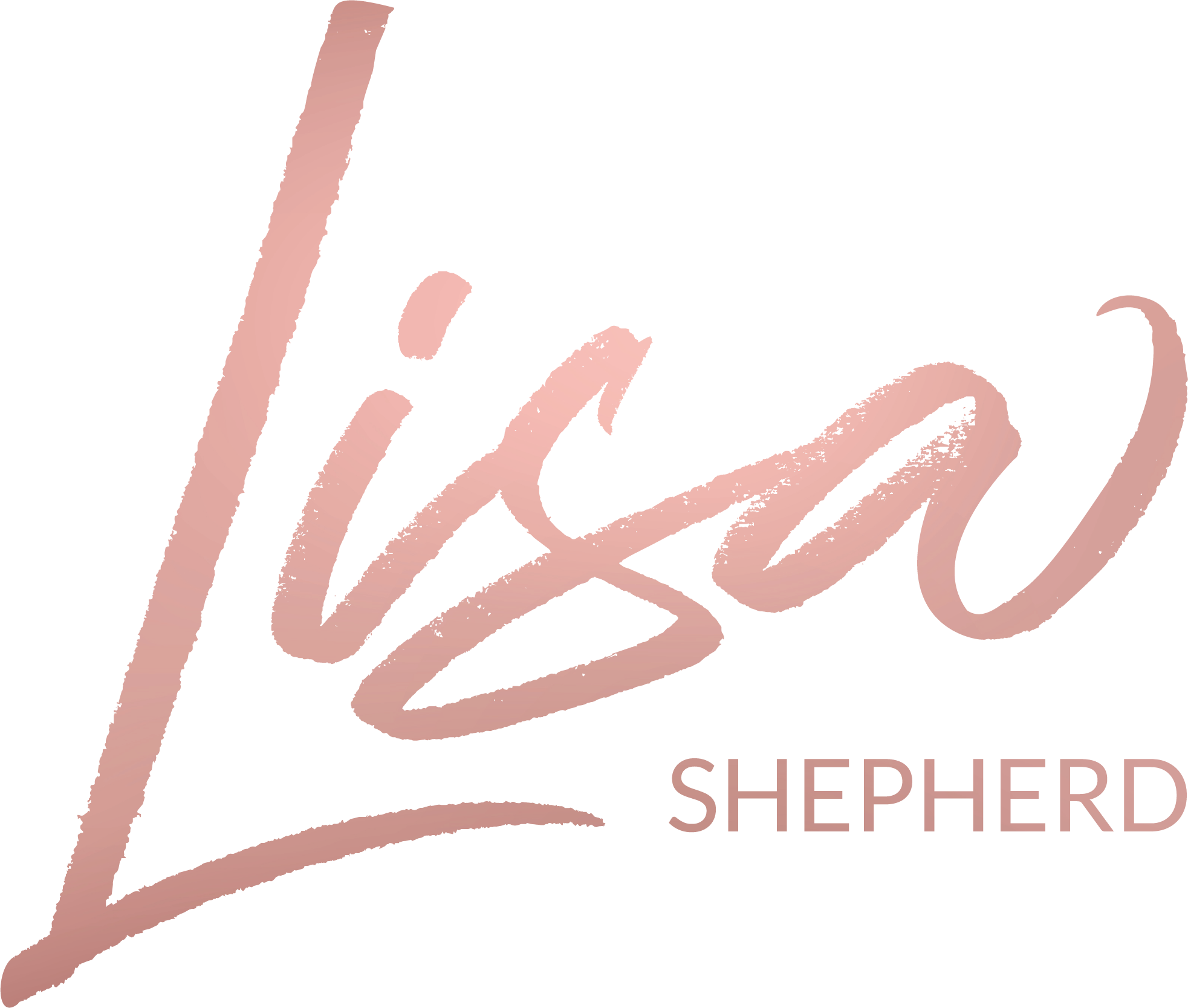As featured in The Hairdressers Journal….
Lisa is one of the country’s best-loved hairdressers, acclaimed for her colour know-how, savvy business skills and an ability to make women feel fantastic about themselves. However, Lisa’s career was almost cut short, when a terrifying incident left her physically unable to work in the one place she’d always felt most at home: the salon.
In December 2016, Lisa suffered a Tonic-Clonic seizure, once known as a grand mal. Lisa suffered impact to her head which led to concussion, but beyond that, the episode also caused lasting damage to her vestibular system – the sensory system which helps with balance and spatial orientation. On top of this, Lisa now also suffers from light-sensitive epilepsy.
This incident meant that salon life no longer felt like an option for Lisa, despite it being the place she most wanted to be. Visual stimulants like colours, light and motion caused intense physical pain, while anxiety and panic attacks also flared up in the now-hostile surroundings.
Recalls Lisa: “The seizure happened on 1 December and anyone in our industry knows how busy Decembers are, so I didn’t even have the next day off. It’s a difficult illness to understand and so at the time I had no idea what was going on so I soldiered on from the very next day.
“I found I could do static, standing work such as colouring and cutting, but I couldn’t cope with any type of movement such as blow drying. I couldn’t manage the movement of the hair dryer. Luckily all my clients have been with me for years so I was honest and just did what I could and had my team to help me do what I couldn’t. Everyone was super understanding and it quickly became apparent what I couldn’t cope with. As the tests came in I researched and educated myself to understand what it was I was dealing with.”
With a lifelong love of hairdressing and a problem-solving business brain which had already seen her launch smart initiatives like the Color Bar, Lisa decided to take matters into her own hands and radically alter her salon to make it a place where she – and others living with similar illnesses – would feel safe and welcome.
Lisa’s game-changing low sensory salon includes a series of smart initiatives, all designed to provide alternatives to standard facilities.
“It wasn’t a huge job at all, but a focused one until it felt right,” says Lisa. “The changes happened bit by bit depending on how my body and brain felt and reacted, lighting and re-painting were the initial things that needed to change. I re-educated the team on their vestibular and sensory knowledge and they have to know what to say and do if someone has an episode. Often with any sensory issue all someone needs to cope with an episode is peace and quiet. At the beginning, I was having episodes daily, if not hourly and those times I needed a dark, low sensory, silent room. So, my office was converted into this space, a safe place.”
The changes have proved a massive hit with clients, old and new. “They love the changes,” says Lisa. ”Existing clients all commented on how calm and spa-like it felt. Everyone that comes to the salon has an experience that is stress-free and calm, exactly how a salon should be.”
The spa-like environment has also attracted new clients Says Lisa: “Positive mental state is hugely important with a sensory issue or chronic illness, especially when it’s an invisible one and so, as many of us professionals know, the power of having great hair can actually make someone feel a million dollars even if they feel shocking inside. Once I’d joined VEDA (Vestibular Disorder Association) and started sharing my story it inspired people to come and trust me. It’s honestly been one of the most rewarding times for me, I do still get quite emotional about it because I can see and most defiantly feel their pain.
“As an industry, we could be more aware of mental health and chronic illness. We could be a lot more helpful. My aim to raise awareness of just how many people are alienated from a salon experience and we have it in our hands to change this and make the salon a positive experience and a safe place for them.”

To read the full article, click here (source: Hairdressers Journal Interactive)
